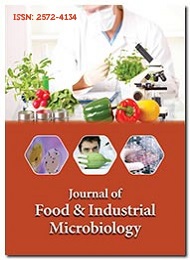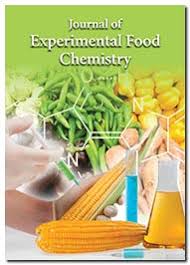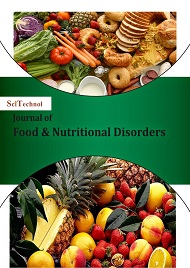Theme: Exploring Innovations, Recent Advancements in Food Chemistry, Microbiology and Modern Impact on Quality, Nutrition, Health and Safety
Food Chemistry Meet 2020
Dear Potential Researchers, Scientists, Industrialists & Students,
Join us for 13th World Congress on Food Chemistry and Food Microbiology
Update your skills, Meet your academic heroes, Engage in high-level debates and refine your ideas enhance your knowledge base, and broaden your horizons, Visit a new place and have fun, - all in one place!
Date: June 09-10, 2020
Venue: Webinar
If you are interested to be a part of this event as a speaker or delegate!
Email: foodchemmeet@memeetings.com
Call: 1-201-380-5561 (Extension No- 7005)
WhatsApp: +44 7723584505
Why to attend Food Chemistry and Food Microbiology Conference 2020?
Our aim is to the corporate community and to create a platform for the exchange of information on technological developments, new scientific modernization and the effectiveness of various regulatory programs towards Food Chemistry Meet 2020. The application of Molecular Approaches in all aspects of the modern Food Science field. This conference also focuses on a wide variety of current research on microbes that have both beneficial and deleterious effects on the safety and quality of foods, and are thus a concern of public health.
This is the finest opportunity to interact with participants from the Food Chemistry, Food Microbiology associations & Food Biotechnology, Associations, Food Chemistry Societies, and Food Science Academicians. It mainly concerns on the modern impact and technologies in Food Chemistry and other relevant to Food Sciences, as well as for initiation of new assessments and technologies and the effectiveness of various regulatory programs on Food Chemistry towards Food Chemistry Meet 2020 conducts presentations, share knowledge, meet with present potential and eminent scientists, and receive name recognition at this two days event.
Target Audience of Food Chemistry and Food Microbiology Conference 2020
- Food Chemists
- Food Technologist
- Food Microbiologists
- Food Technicians
- Food Industrialists
- Food Microbiology Societies
- Oncologists
- Endocrinologists
- Food Microbiology Associations
- Food Microbiology and Chemistry researchers
- Biotechnology
- Nanotechnology
- Food Inspectors
- Physicians Nutritionists
- Academic faculty
- Registered Dieticians
- Fitness experts
- Private sectors
- Researchers
- Students (Postgraduates, Doctorates)
- Business Entrepreneurs and Industrialists
- Directors, Board Members, Presidents, Vice Presidents
- Scientists
- CEO's and R& D Heads from Industries
Track 1: Food Chemistry
It is the study of chemical process and interaction of all biological and non- biological components of food. The biological substances include items like meat, poultry, lettuce, beer, and milk as examples. It covers with organic chemistry in which it manages the parts of nourishment. For example- Proteins, Vitamins, Sugars, Water, and Dietary minerals. Furthermore, it includes the investigation and improvement of preservatives and nutrients, added substances that can be utilized to safeguard the nature of sustenance or to alter its shading, flavor, and taste. Food chemistry plays a key role in ensuring that the food being processed is of high quality and is safe for consumption. Understanding food chemistry helps us develop proper ways of handling food and good manufacturing practices.
Track 2: Food Microbiology
Food microbiology- the scientific study of microorganisms that are used both in food and for food production. This includes microorganisms that spoil food, as well as those which are used in food production. For example the production of alcohol, production of juices, production of yogurt and cheese, etc. This is the study of microorganisms that inhabit, create, or contaminate food. Some of the microorganisms cause food spoilage, pathogens cause contamination in food as they are improperly cooked or they stored in an unhygienic manner. Some of the microbes (etc.) are useful as they help us in the production of alcohol, bread, dairy products, and in the manufacturing of probiotics.
Track 3: Food Analysis and Quality Assurance
Food analysis deals with the development, application and study of analytical procedures for characterizing the food properties and their constituents. These analytical procedures are used to provide information about a wide variety of various characteristics of foods including their structure, composition, physicochemical properties and sensory attributes. This information is critical to our rational understanding of the factors which determine the food properties, as well as to our ability to economically produce foods that are consistently nutritious, safe and desirable for consumers to make informed choices about their diet.
Track 4: Diet and Cancer
Dietary factors recognized as having a significant effect on the risk of cancers with different dietary elements both increasing and reducing risk. Diet and obesity are most related to up to 30-35% of cancer deaths, whereas physical inactivity appears to be related to 7% of the risk of cancer occurrence. A review in 2011 suggested that total caloric intake influences cancer incidence and possibly progression.
Many dietary recommendations have been proposed to overcome the risk of cancer; few have significant supporting scientific evidence. Obesity and alcohol intake has been correlated with the incidence and progression of some cancers. Reducing consumption of beverages sweetened with sugar is recommended as a measure to address obesity. Diet with fewer fruits and vegetables and high in red meat has been implicated but not confirmed and the effect may be less for well-nourished people who maintain a healthy weight.
Some specific foods are linked to specific cancers. Studies have linked eating red or processed meat to an increased risk of breast cancer, colon cancer, prostate cancer, and pancreatic cancer, which may be partially explained by the presence of carcinogens in foods cooked at high temperatures.
The differences in dietary practices may partly explain differences in cancer incidence in different countries. For example, Japan is more prone to stomach cancer due to high salt in their diet whereas United states commonly affected by Colon Cancer
Track 5: Fermentation
Track 6: Food Drug Analysis
Drug Interaction is a situation when the activity of a drug is affected by a substance i.e. the effects may increase or decrease, or may produce a new effect that can’t be produced on its own. These interactions may arise due to accidental misuse or lack of knowledge of the active ingredients involved in the substances concerned. A drug interaction is noticed to the substance which influences the action of a medication, i.e. the knocks are at its peak or at it's down too or they create another smash that neither controlled by own. Associations among nourishment and medications may accidentally taper off or adjunct the medication impact.
Track 7: Food Nutrition and Health
The effective management of nutrition and food intake are both keys to good health. There are six categories of nutrients that the body needs to acquire from food: Protein, carbohydrates, fat, fiber, vitamins, minerals and water. It includes the intake of food, absorption, assimilation, biosynthesis, catabolism, and excretion. The diet of an organism is what it eats, which is largely determines by the availability, processing, and palatability of foods. A healthy diet includes the preparation of food and storage methods that preserve nutrients from oxidation, heat or leaching, and that reduces the risk of food-borne illnesses. A poor diet shows an injurious impact on health, causing deficiency diseases such as blindness, scurvy, anemia, preterm birth, stillbirth, and cretinism; health-threatening conditions like obesity and metabolic syndrome and such common chronic systemic diseases as cardiovascular disease, osteoporosis, and diabetes.
Track 8: Food Science and Technology
Food preservation is preventing the growth of micro-organisms as well as retarding the oxidation of fats that cause rancidity thus encouraging longer shelf life and reduced hazard from eating the food. Safety is a major concern in food processing, as processed food can be easily contaminated and, as a result of increased contamination, can quickly cause widespread illness. Food production should also be balanced against food preservation. Some preservation methods cause diseases to the human, for example, the addition of food additives for preservation. Nowadays many methods and techniques are used in food processing, packaging to improve the quality and shelf life of foods and to create the barrier from oxygen, light, UV, etc. Tale ingredients and product development are used to substitute food items to enhance the Rheology, characteristics, shelf life of meat.
Track 9: Food Processing and Preservation
Food preservation is preventing the growth of micro-organisms as well as retarding the oxidation of fats that cause rancidity thus encouraging longer shelf life and reduced hazard from eating the food. Safety is a major concern in food processing because packaged food can be contaminated easily and due to an increase in contamination, it can quickly cause widespread illness. Food processing should be balanced with food preservation also. Some preservation methods cause diseases to the human, for example, the addition of food additives for preservation. Nowadays many methods and techniques are used in food processing, packaging to improve the quality and shelf life of foods and to create the barrier from oxygen, light, UV, etc. The tale ingredients and food design are used to alternate the food items to improve the Rheology, characteristics, shelf life of foods.
Track 10: Diet in Obesity and Under Weight
Obesity is a growing concern because being overweight is widely stared as a major risk factor for metabolic syndrome, cardiovascular disease, and early death. Although the mechanisms for this weight improvement have not been entirely elucidated, dietary factors may be important in the development of obesity. Diet contains combinations of foods, and these individual components may have interactive or synergistic effects that make studying dietary factors in isolation difficult. Dietary patterns that signify a combination of foods may be more strongly related to disease risk than individual food and nutrient. Previous studies have stated that dietary patterns that are high in fruits, vegetables, and fiber might be associated with a reduced risk of obesity.
Track 11: Importance of Food and Nutrition
Good nutrition is a major part of leading a healthy lifestyle. Combined with physical activity, your diet can help you to reach and maintain a healthy weight, reduce your risk of nutritional disease and chronic diseases (like heart disease and cancer) and promote your overall health. Nutritional diet helps in reducing weight gain at every age.
Track 12: Microbial aspects of Food Quality and Spoilage
Food microbiology deals with all the microbial factors of food spoilage. During food processing, harvesting, and downstream operations food may additionally end up inflamed with a huge type of microorganisms. The primary elements associated with food spoilage are related to intrinsic food homes which consist of endogenous enzymes, substrates, sensitivity for mild, oxygen, and move-infection in the course of harvesting, slaughter, and processing in combination with temperature abuse For smooth meals the number one food first-rate changes can be labeled as (i) oxidation of lipids and pigments in fat-containing food resulting in undesirable flavors, formation of compounds with damaging organic outcomes or discoloration (ii) bacterial increase and metabolism ensuing in viable pH-modifications and formation of poisonous compounds, off-odors, gas and slime-formation.
Track 13: Food Safety, Security and Control
Food safety is a scientific subject describing the handle, guidance, and storage of food in approaches that prevent food-borne infection. The prevalence of two or greater instances of comparable illnesses attributable to the ingestion of a not unusual food is called a food-borne ailment outbreak.
Preference of food chemical exceptional is managed of allergens which can be lifestyles-threatening to a few humans which are highly sensitive. Other chemical houses of food along with vitamin and mineral content material are also important and have an effect on the general excellent of the food but aren't as large in terms of food safety. To prevent harm, the absence of foreign microphysical particles is vital.
Track 14: Enzymes in Food
Enzymes are the catalysts that perform specific reactions essential for the production and improve the quality of the final product. A very small quantity of enzymes can speed up the reaction to many folds. The enzymes act on a narrow range of conditions such as concentration, acidity, and temperature. The enzymes are extracted from plant sources, animal sources, and even microorganisms. Amylases, Lipase, protease papain, rennet, pectinase are the commonly used enzymes in food industries.
Track 15: Human Health in Probiotics
Probiotics are live microbial cultures that enhance the beneficial gut micro flora to improve the overall health of the host. It is a rising field in the dairy food industry with significant growth potential. Probiotic food supplements have attracted a lot of attention and revealed a remarkable growth in this field. Various bacteria, yeast, and molds can be used as probiotics, but the most commonly used microorganisms are lactic acid bacteria (LAB). LAB is involved in the fermentation of foods, dairy products, and beverages and produces lactic acid as the end product of fermentation. Among LAB, the most commonly used bacteria that exhibit excellent probiotic properties belong to Lactobacillus and Bifid bacterium genus. These bacteria produce a variety of compounds such as organic acids (lactic acid and acetic acid), antimicrobial compounds (bacteriocins), nutraceuticals, vitamins, enzymes, etc.
Track 16: Food Toxicology
Food toxicology researches the dangerous effects of physical, chemical, and biological retailers in biological structures that set up the quantity of harm in living organisms. It offers with toxic substances in food either of the herbal origins or fashioned after food spoilage or widespread practices to be avoided to store the vitamins. Food toxicology research on how herbal or synthetic poisons and toxicants in diverse food products cause dangerous, unfavorable, or destructive side consequences in dwelling organisms. Food toxicology is critical attention as the food supply chain is turning into an extra multinational in origin, and any contamination or poisonous manifestation may additionally cause severe, wide-unfold destructive health effects. Food Toxicology covers diverse factors of food protection and toxicology, such as the observation of the character, properties, consequences, and detection of toxic materials in food and their ailment manifestations in human beings. It may even encompass other elements of consumer product protection.
Track17: Industrial Biotechnology in Food Industries
Industrial biotechnology is one of the most assuring new accesses to pollution prevention, useful resource conservation, and fee reduction. Newly many tactics in the meals industry perform the top-notch role of food biotechnology. GM plants and animals are used to complement the flavor, shelf life, nutrients and first-class food. GM yeast and Bacteria are used to provide enzymes for the sake of the meals industry. These GM foods are produced by using biotechnological strategies specifically genetic engineering. These techniques can be used to erase hunger from bad human beings.
Track 18: Food Bio Actives
Bioactive is the nonessential biomolecules that are present in foods and exhibit the capacity to modulate one or more metabolic processes, which results in the promotion of better health. Aside from supplements, nourishment contains little measures of purported bioactive mixes. These mixes include an incentive past nourishment, specifically influencing physiological capacities in our body by following up on cell pathways. Epidemiologic examinations, where the impacts of an eating routine in various populaces are watched, show that the individuals who eat natural products, vegetables, entire grains, and fish are probably going to lead a long and solid life.
Track 19: Food Science and Food Business
Biocatalyst is the chemical system via which enzymes or other organic catalysts perform the reaction between organic additives. Agricultural biotechnology additionally called Agritech. It is a location of agricultural science regarding the usage of scientific equipment and techniques, collectively with recombinant DNA generation, molecular markers, molecular medication, vaccines, and tissue way of life, to replace residing organisms: flora, animals, and microorganisms. Crop biotechnology is one aspect of agricultural biotechnology that has been significantly advanced nowadays with the desired characteristic place unit exported from a selected species of Crop to a completely definitely one of a kind species. These transgene crops own captivating traits in terms of flavor, the color of flora, increase rate, length of harvested products and resistance to illnesses and pests. Recent trends in agricultural biotechnology.
Track 20: Biocatalyst and Agriculture biotechnology
Biocatalyst is the chemical system via which enzymes or other organic catalysts perform the reaction between organic additives. Agricultural biotechnology additionally called Agritech. It is a location of agricultural science regarding the usage of scientific equipment and techniques, collectively with recombinant DNA generation, molecular markers, molecular medication, vaccines, and tissue way of life, to replace residing organisms: flora, animals, and microorganisms. Crop biotechnology is one aspect of agricultural biotechnology that has been significantly advanced nowadays with the desired characteristic place unit exported from a selected species of Crop to a completely definitely one of a kind species. These transgene crops own captivating traits in terms of flavor, the color of flora, increase rate, length of harvested products and resistance to illnesses and pests. Recent trends in agricultural biotechnology.
Track 21: Current Research in Nutrition and Dietetics
The nutrition criteria are not intended as a universally applicable system. The category choices were motivated by the need to balance the need for simplicity and consistent treatment of similar products on the one hand and on the other, the need to avoid categories so broad that only lax nutrition criteria would accommodate different types of products represented in a category. In order to ensure both robustness and fairness, it was necessary to create sub-categories within most of the nine categories.
Nutrition labeling is information found on the labels of pre-packaged foods.
The legislated information includes:
• The Nutrition Facts table
• The ingredient list
• Some optional nutrition claims
These give you information about the nutritional value of food. You can use this information to make good and healthier food choices and achieve overall good health.
The Nutrition Facts table gives information about:
• Calories
• 13 core nutrients
• % Daily Value(% DV) of nutrients
Total information in the Nutrition Facts table is based on an amount of food.
Foodborne diseases take a major toll on health. Millions of people fall ill and many die because of eating unsafe food. So, WHO Member States adopted a resolution in 2000 to recognize food safety as an essential public health function.
Food safety aims are at ensuring that all food is as safe as possible. Food safety actions and policies need to cover the entire food chain, from production to consumption. A.) Calorie Intake and Consumption.
Track 22: Management of Food Waste
Food wastage is scarce for our society. Though enough food is produced every day, the food is being wasted every day on one part of the world and a poor man starves for a day meal on the other part of the world. The global food loss and wastage account between one third and one half of all food being produced. The food waste or loss occurs in all stages from processing till consumption.
Track23: Nutrition and Health
Food components are chemical compounds delivered to foods to maintain them sparkling or to decorate their color, flavor or texture. They may additionally consist of food colorings, flavor enhancers or a number of preservatives. Food additives should be checked for his or her harmful results on human fitness before they can be used. Toxicological checks on animals are used to decide the quantity of the additive that is expected to be secure while fed on by using humans. Natural food components are continually better, more secure and simpler than synthetic food additives. The use of food components ought to be managed and monitored by using powerful studies and governmental regulations.
Track 24: Food Additives
Food components are chemical compounds delivered to foods to maintain them sparkling or to decorate their color, flavor or texture. They may additionally consist of food colorings, flavor enhancers or a number of preservatives. Food additives should be checked for his or her harmful results on human fitness before they can be used. Toxicological checks on animals are used to decide the quantity of the additive that is expected to be secure while fed on by using humans. Natural food components are continually better, more secure and simpler than synthetic food additives. The use of food components ought to be managed and monitored by using powerful studies and governmental regulations.
Track 25: Food Biochemistry
Food Biochemistry is the study of the breakdown of sustenance within the cell as a wellspring of energy. Every cell is a manufacturing line that modifies over the supplements for the nourishment one eat to power and different fundamental components of the body. The measure of vitality the supplements supply is communicated in Calories (kilocalories). The number of Calories gobbled will decide the vitality alter of the individual and whether one gain or loses. Food Biochemistry incorporates the usage of modern concoction and biochemical systematic techniques for sustenance segments and their responses reveal frameworks to reflect consideration on their responses and genuine apparatuses for statistics exam to get the max. extreme beneficial merchandise.
Track 26: Brewing technology
It is the output of beer through steeping a starch source (commonly cereal kernels) in water and then fermenting with yeast. Brewing is completed in a brewery by a brewer. Brewing commerce is one of the parts of most western economies. Malting is the method where barley grain is made ready for brewing.
Track 27: Food Engineering
Food engineering is a subject associated with Food production that covers the realistic applications of food technology. The motive of this area is to improve the implementation of green commercial processing inside the transformation of raw materials of organic starting place into suitable for eating bureaucracy, which incorporates packaging, storage, and distribution. Food engineering includes the utility of agricultural engineering, mechanical engineering and chemical engineering concepts to food substances. Food engineers are employed in food processing, food equipment, packaging, ingredient manufacturing, instrumentation, and Control.
Track 28: Food-Borne Diseases
Foodborne disease or foodborne illness or food poisoning is any illness resulting from the food spoilage of contaminated food, pathogenic bacteria, viruses, or parasites that contaminate food. Foodborne illnesses are infections or irascibilities of the gastrointestinal tract triggered by food or beverages that contain harmful bacteria, parasites, viruses, or chemicals. The gastrointestinal tract is a sequence of hollow organs joined in a long, twisting tube from the mouth to the anus. Common symptoms of foodborne illnesses are vomiting, diarrhea, abdominal pain, fever, and chills.
MARKET ANALYSIS
Food Chemistry and Food Microbiology Conference 2020 welcomes attendees, presenters, and exhibitors from all over the world to Abu Dhabi, UAE. We are delighted to invite you all to attend and register for the 13th World Congress on Food Chemistry & Food Microbiology which is going to be held during May 29 - 30, 2020 in Istanbul, Turkey.
The organizing committee is gearing up for an exciting and informative conference program including plenary lectures, workshops, symposia on a variety of topics, poster presentations and various programs for participants from all over the world. We invite you to join us at the Food Chemistry Microbiology Congress, where you will be sure to have a meaningful experience with scholars from around the world.
Importance & Scope of Food Chemistry and Food Microbiology Conference 2020:
Food Chemistry and Food Microbiology is a branch of Food Science which includes the summation of numerous processes that equips a Food Technologist with technical Knowledge of Food Processing. As a Food Technologist, one learns the art of preservation, processing and packaging food along with the techniques of transforming raw materials into safe, nutritious, wholesome ready-to-consume food. It also involves the addition of flavors, reduction of toxins and so on. With the rise in demand for packaged and processed food, there is an equal rise in demand of manpower with a good sense of packaging and preservation, which makes a product more marketable.
Food Chemistry-Microbiology Congress is a leading forum for academic faculty, Food science Technologist, Microbiologist, Nutritionist registered dieticians & practitioners, research experts in Food technology, Food microbiologist and food chemistry researchers, President’s, Founders, CEO’s, business delegates, investors in Food & Nutrition sectors, Scientists, young researchers and talented student communities from universities and research labs providing an ideal environment to share the latest innovations in the Food Science and food technology and Nutrition & Food chemistry conferences are very important for the common people to remain healthy and fit throughout their life.
For more details please visit: https://foodchemistry-microbiology.conferenceseries.com/
Why Food Chemistry and Food Microbiology Conference 2020 in Istanbul, Turkey?
42% of heart disease cases are fatal in Turkey, above the global average, health official warns. Turkey is the most obese nation in Europe, as the country has an obesity rate of 32.1 percent, the World Health Organization (WHO) warned in a newly released report. Data on 900 million people in 53 countries found Turkey rising up the obesity league tables. The European average is 23.3 percent. Obesity is defined as a body mass index (BMI) score of more than 30, while a tally higher than 25 is classified as overweight. Turkey was followed by Malta(UK), and Hungary, which have an obesity rate of respectively 28.9 percent, 27.8 percent, and 26.4 percent. A country with the lowest rate was Tajikistan with 14.2 percent. The report based the figures on data from 2016 and surveyed only people aged above 18. When compared with previous years' data, the obesity rate showed a significant rise in Turkey, according to the WHO. This figure was 10.4 percent in 1980, 16.3 percent in 1990, 22.2 percent in 2000 and 28.2 percent in 2010.“The prevalence of overweight and obesity among adults in the European Region is high and on the rise. In most countries in the region, the prevalence of overweight was higher among men, while the prevalence of obesity was higher among women,” said the WHO report, which was launched in London on Sept. “In 2016, the rates for obesity and overweight were 63 percent and 21.9 percent among men and 54.3 percent and 24.5 percent among women. These rates were higher than the reported values in 2010: the rates for overweight and obesity were 59.7 percent and 18.8 percent among men and 52.1 percent and 22.5 percent among women,” the report further said.
Market Statistics of Food Chemistry and Food Microbiology Conference 2020
Industrialized international locations are facing a severe period of monetary disaster with rising charges and shortage of raw ingredients that provide rise to fraud and adulteration. Therefore, the continuous improvement of strategies for enhancing the safety, quality, and integrity of the meals is a connecting factor among the needs of the meals enterprise and the targets of studies centers. The tough competition in the meals global marketplace may also lead some groups to search for less expensive but illegal uncooked substances.
Worldwide, food safety is a huge difficulty for customers due to the solid hazard of food-borne sicknesses, thereby having a towering impact on the meals protection testing marketplace. Food safety testing is important to attain a certificate of evaluation of equipped-to-consumer foods and raw meals gadgets at various levels of meals processing. Users are supplied with food safety tags on food objects to ensure protection and fine of food items. This, in flip, has accelerated the importance of global food protection trying out market place.
As in line with the analysts, the worldwide requirement for the food safety testing marketplace changed into capitalized at USD 4.8 Billion in 2015. This is probable to go USD eight.04 Billion via the quit of 2021 and is expected to leap at a CAGR of7, 8% from 2016 to 2021.
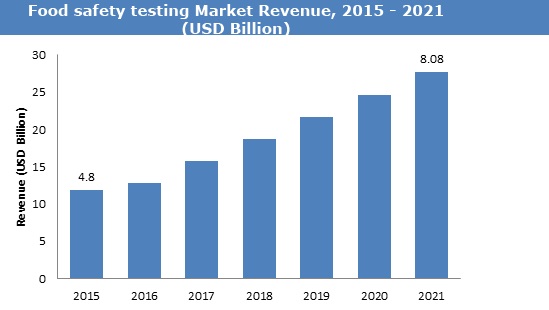
Global Market Analysis of Food Chemistry and Food Microbiology Conference 2020
The need for the food is increasing rapidly with the increase of the population, in order to put the food need requirements; the global market should undergo tremendous changes in the food safety and food processing technologies. The need for fruits, vegetables, and dairy products, meat is different for 2015 and 2019, hence there should be a preventive step to keep the need for 2020-2025.
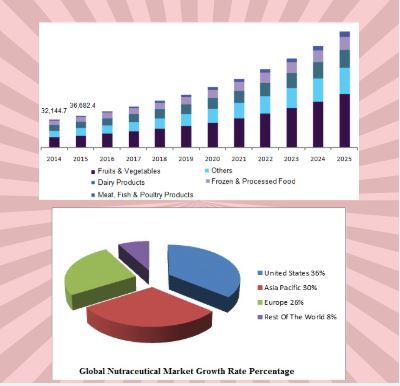
Over the subsequent 40years, there may be seen a consistent climb inside the growth of food call for as indicated below.
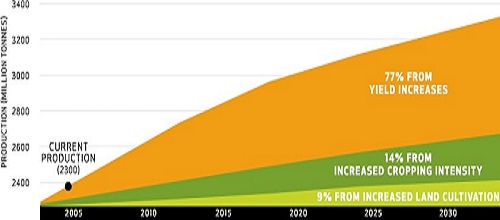
The proportions of animal-derived ingredients in human diets are expected to change little inside the years to 2030. However, the full growth in call for these foods in Africa and Asia can be very massive due to each of the increasing numbers of human beings in those areas and to the increasing numbers of human beings in these regions with a chunk of disposable income to spend on such ingredients.
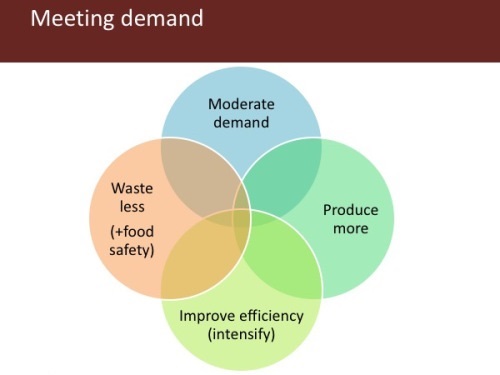
It is envisioned that about one-third of the food produced worldwide is wasted. An expected 61% of meals waste takes place inside the agricultural quarter and in private intake, 22% inside the processing enterprise, thirteen% within the catering exchange and four% inside the big supermarket chains.
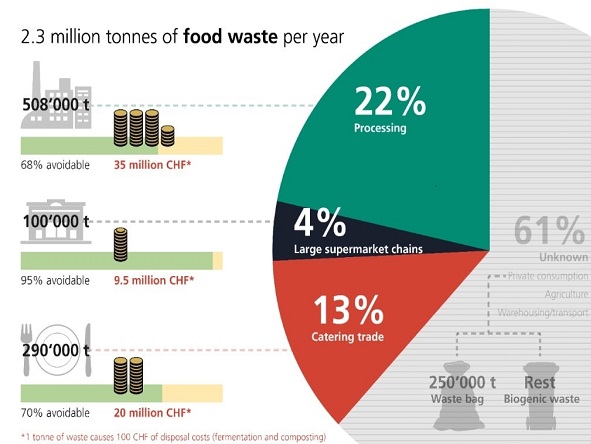
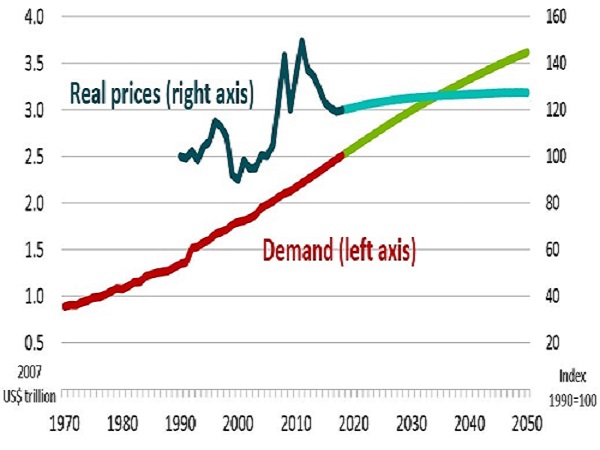
Conference Highlights
- Food Chemistry
- Food Microbiology
- Food Analysis and Quality Assurance
- Diet and Cancer
- Fermentation
- Food Drug Analysis
- Food Nutrition and Health
- Food Science and Technology
- Food Processing and Preservation
- Diet in Obesity and Under Weight
- Importance of Food and Nutrition
- Microbial aspects of Food Quality and Spoilage
- Food Safety, Security and Control
- Enzymes in Food
- Human Health in Probiotics
- Food Toxicology
- Industrial Biotechnology in Food Industries
- Food Bio Actives
- Food Science and Food Business
- Biocatalyst and Agriculture biotechnology
- Current Research in Nutrition and Dietetics
- Management of Food Waste
- Nutrition and Health
- Food Additives
- Food Biochemistry
- Brewing Technology
- Food Engineering
- Food-Borne Diseases
To share your views and research, please click here to register for the Conference.
To Collaborate Scientific Professionals around the World
| Conference Date | June 09-10, 2020 | ||
| Sponsors & Exhibitors |
|
||
| Speaker Opportunity Closed | |||
| Poster Opportunity Closed | Click Here to View | ||
Useful Links
Special Issues
All accepted abstracts will be published in respective Our International Journals.
- Journal of Food: Microbiology, Safety & Hygiene
- Journal of Nutrition & Food Sciences
- Journal of Probiotics & Health
Abstracts will be provided with Digital Object Identifier by



